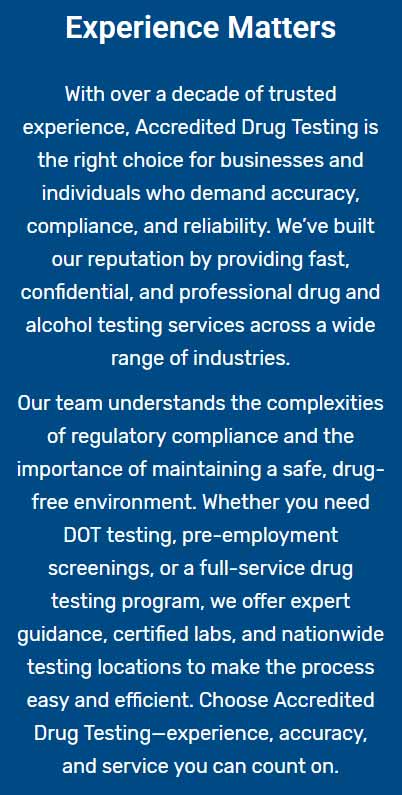What it is, How it works
Hair testing has come to be recognized as an effective means for detecting drug and alcohol consumption. Hair serves as a chronicling mechanism for alcohol and drugs by embedding biomarkers within its growing fiber strands. Collected from the scalp vicinity, hair can reveal a detection span of up to about three months for alcohol and drugs. Hair collection is straightforward, challenging to tamper with, and convenient for shipping.
A 1.5-inch section, comprising roughly 200 strands (similar in size to a #2 pencil) closest to the scalp, offers 100mg of hair, which is the preferred specimen for both screening and confirmation. For EtG, additional elements, and assessments exceeding 10 panels, 150mg of the sample is advisable. It's beneficial to measure the sample using a jeweler’s scale. In the absence of scalp hair, an equivalent quantity of body hair is acceptable. When mentioning head hair, it specifically pertains to scalp hair, while body hair encompasses all other variants (e.g., facial, axillary).
Process Overview
The laboratory process for analyzing a drug test outcome encompasses four pivotal steps: Accessioning, Screening, Extraction, and Confirmation.
Accessioning entails the primary registration of a sample into a laboratory's system, which involves verifying that it was adequately sealed and dispatched, assigning it a random LAN (Laboratory Accessioning Number), and finalizing any further data input absent from an electronic chain of custody framework.
Screening serves as a preliminary rapid assessment for signs of drug misuse. Though Screening is a cost-efficient method to exclude drug usage for most samples, a positive result necessitates confirmation to validate its legal standing. Any samples that appear positive during Screening require further confirmation.
If a sample preliminarily tests positive during Screening, additional hair is extracted from the initial sample and advanced to the Extraction stage. Here, drugs are isolated from hair in concentrations that are much lower than other methods (such as urine or oral fluid), making hair drug analysis the most challenging methodology to execute.
Positive screening outcomes undergo Confirmation via GC/MS, GC/MS/MS, or LC/MS/MS procedures. All initially positive samples undergo washing before Confirmation as dictated. The comprehensive laboratory sequence from Accessioning to Confirmation is scrutinized under both the CAP (College of American Pathologists) Hair designation and the ISO / IEC 17025 standards.
Advantages of hair drug testing:
- Long detection window: Hair drug tests can track drug use for up to 90 days, as opposed to urine tests, which provide a shorter detection timeframe.
- Difficulty to cheat: It is nearly impossible to skew a hair drug test, resulting in more precise outcomes.
- Provides historical data: Hair analysis reveals a pattern of drug consumption over time, unlike tests that reflect only recent usage.
Limitations:
- Cannot detect recent use: Drugs become detectable in hair approximately 5-7 days post-consumption.
- Cost: Hair drug tests typically incur higher costs than alternative drug testing approaches.
- Variations in results: Elements such as hair color and personal hair growth variations can influence the concentration of drug metabolites in the hair.
Note: Despite its common reference as "hair follicle tests," the procedure actually examines the hair strand, not the hair follicle beneath the scalp.




